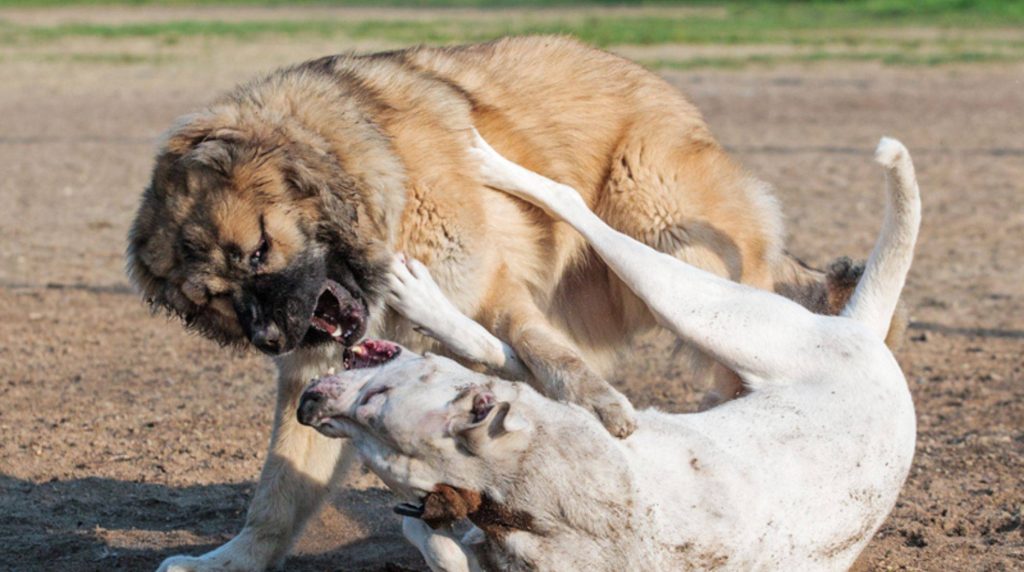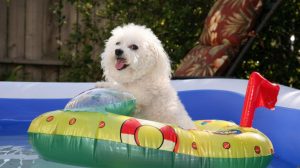When it comes to bullying among dogs, there is not only a victim but also a perpetrator. Bullying dogs have usually learned as puppies that bullying other dogs is worthwhile. If you have such a “brawler” at home, do not just let him do it because his behavior will deteriorate. But what can you do in this case?

Nowadays, bullying is mainly used against groups of people at school or work. It originally comes from the animal world: in 1963, the behavioral biologist Konrad Lorenz described a phenomenon when several animals join forces to drive away a predator, for example, geese or a fox. The term was only adopted in the 1970s by the Swedish psychologist and doctor Heinz Lehmann for groups of people. Dogs can also be both victims and perpetrators of bullying – using physical violence rather than psychological terror.
Why dogs are prone to bullying
A bullying dog usually seeks out weaker members of its species as victims, for example, dogs with disabilities, smaller dogs, puppies, newcomers to a dog group, very anxious, insecure animals, or those that show strong appeasement signals. It is also possible that other four-legged friends let themselves be instigated by the bully and bully the bullying victim in the group. The perpetrators chase the other dog, bump into it, throw it over, hold it against its will and harass it. The bullied animal will try to flee, seek shelter, or appease the attackers, which fuels them more. This is the release of adrenaline in hunting and attacking situations, which the bully finds pleasantly stimulating. In problematic cases, the horses run away with him, and he no longer has himself under control.
behavior is learned
Bullying dogs often learned this behavior when they were puppies and found the adrenaline rush to be a reward. They enjoy bullying their peers; they find it exciting and thrilling when they drive others. Certain breeds of dogs are more prone to this than others – hounds and sighthounds, for example, as the former has a strong hunting instinct and the latter like to run very fast and enjoy the adrenaline rush. A game of racing or chasing other dogs can then turn into bullying. The Spanish sighthound and hunting dog Galgo Español is often said to tend to bully behavior. However, it must be emphasized that the innate predisposition is not fate but can be kept in check through good dog training, species-appropriate farming, and employment. Galgos in Spain often grow up in so-called breeding facilities; the puppies and young dogs are kept together in the kennel, and then they have to settle their conflicts among themselves according to the law of the strongest. This is how bullying perpetrators and victims are formed early on.
This can also happen to young dogs from abroad if they are imported to Germany by animal rights activists without knowing their history. In puppy playgroups that are poorly managed and supervised, the giant, more robust puppies can also learn that bullying their smaller, weaker playmates can be fun. If the hormones then go haywire during puberty, the bullies are in a permanent state of excitement and use games with their peers to relieve the tension.
Is your dog a bully? You can do that.
If your dog is bullying others, you should intervene immediately. Take your bully out of the situation, lead him away from the other dogs, and calm him down. First, try to get him with a recall command. If this doesn’t work, go to the dogs and leash your “bully.” You can stand up in front of your “bullies,” spread your arms and make yourself tall as a stop signal. Say “stop” in a firm, clear voice and remain calm and confident until your four-legged friend relaxes. Then relax, too, and reward your dog with a quality treat. Through this positive reinforcement, he gradually learns that it is more worthwhile for him to remain calm than to annoy his fellows.
For particularly stubborn candidates, it is helpful to seek professional support. An animal psychologist can help you understand dog behavior. A good dog school or a dog trainer with additional training in behavioral therapy – for example, as part of problem dog therapy – will help you with dog training. Relaxation exercises are also crucial for your dog to help him regain his inner calm and stop freaking out when playing. Acupuncture for dogs, for example, can have a calming effect. Until your four-legged friend gets himself under control again, you should reduce encounters with other dogs. Once he has calmed down a bit, you can do game and encounter training at the dog school so that he learns “fair play.”










